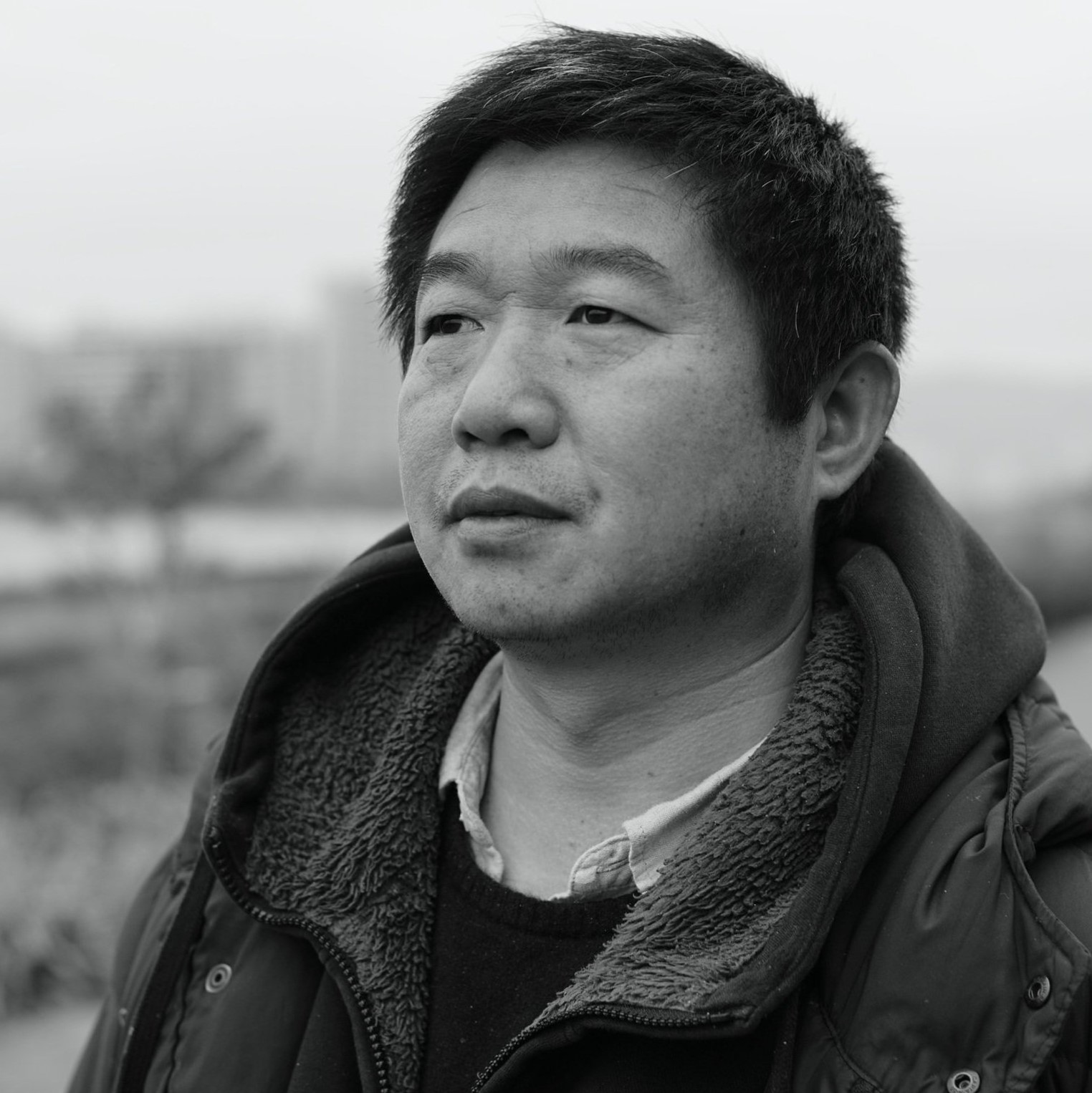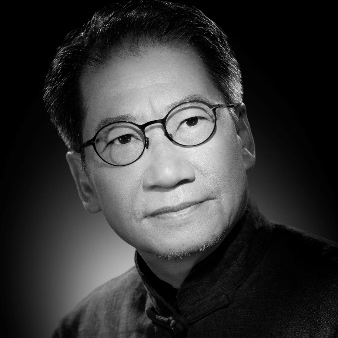Exhibition
WANG Bing :
A Landscape Architect of Memory
October 4 – December 9, 2023
Opening : Octobor 14th. 6pm – 9pm
Curator : Jean LOH
WANG Bing qui est plus connu par ses films et documentaires que par ses photographies, expose pour la première fois les trois séries les plus singulières de son œuvre photographique.
Renowned filmmaker and documentarian Wang Bing is currently presenting a selection of his photographic works in a debut exhibition.
Upon entering the exhibition space, viewers are presented with a compelling invitation to delve into the abyss, cultivating the ability to discern within obscurity. Wang Bing’s fascination with darkness symbolizes themes of negation, oblivion, and institutionalized collective amnesia. He dares us to scrutinize this darkness and uncover the remnants of long-forgotten memories, erased by the systematic tragedies that have marked China’s tumultuous history. These tragedies, spanning from ancient dynasties to the contemporary era, especially marked by the grim statistics of more recent times, find their representation in Wang Bing’s work. His exploration takes us from Tie Xi Qu: West of the Tracks, an examination of the collapse of heavy industry inherited from Soviet and Japanese influence on Man with No Name (无名者), a poignant portrayal of a Beijing homeless nomad trapped in mutism. Along this somber journey, we encounter harrowing accounts of survivors from Jiabiangou’s death gulag (夹边沟), a grim reflection of the 1957 anti-rightist campaign that foreshadowed the devastating three years of the Great Famine during the Great Leap Forward. Wang Bing skillfully guides us deeper into the shadows, leading us through the dimly lit workshops of steel mills, the desolate ditches, mass graves, rat holes and the obscure recesses, where we must strain our senses to pierce through the inky depths—waters in which Wang Bing moves with the ease of a pilot fish.
He meticulously portrays the factory’s machinery in the style of the traditional medium of Chinese ink painting, delicately accentuating them with luminous patches of daylight, thereby positioning the diligent laborer squarely within a landscape destined for gradual dissolution from collective memory. As for the Jiabiangou wasteland (as depicted in his film “The Ditch”), its nocturnal illumination conjures an eerie, almost extraterrestrial panorama, and it is with a profound sense of disquietude that one recalls Neil Armstrong’s iconic declaration: “one small step for man, one giant leap for mankind.” Yet, it is a deeply poignant experience to tread upon the memory of those unfortunate ex-rightists who met their inexplicable and “condemnable” fates and were metaphorically unearthed through Wang Bing’s unwavering dedication.
However, these visual narratives are not extracted from his films but rather originate from tangible silver and salt photographs captured through a series of cameras, including a Yashica, followed by a Nikon F2, and a Hasselblad 6×6, which notably includes a Horseman 6×12—his preferred panoramic apparatus capable of conveying the vastness of the flat Gobi Desert, a region that resonates with the haunting echoes of Dead Souls (死灵魂) in Gansu, the province notorious for recording the highest number of famine-related casualties.
His minimalist photography serves as a testament to his adept command of the notion of “prolonged exposure,” akin to leaving the camera shutter open for an extended duration—an indispensable technique for his foray into the realm of darkness, in stark contrast to the transient, decisive moments of conventional photography. Wang Bing’s meticulous embrace of this “prolonged exposure” is distinctly reflected in the extensive durations of his cinematic works, often necessitating screenings spanning three to nine hours or even more. Furthermore, his investigative endeavors and research pursuits frequently span several years, underscoring his unwavering commitment to his craft.
If one were to regard Wang Bing’s documentaries as films crafted through the lens of photography, his photographic compositions assume the guise of cinematic narratives distilled into singular visual frames. They encapsulate moments of breath; indeed, one can palpably sense the rhythm of his inhalations and exhalations, a remarkable feat considering the challenging atmospheric conditions he often encounters during filming and photography in unbreathable environments. Through his creative work, Wang Bing not only breathes but also actively breathes life into the preservation of these poignant memories. While the selection presented here represents merely a fraction of Wang Bing’s vast and monumental body of work, the act of descending into the confined spaces, reminiscent perhaps of the mazy catacombs of historic Paris, within the confines of ESPACE-TEMPS of Quincampoix, offers a profound opportunity for us to partake in the immersive experience of Wang Bing’s humanism, engaging both visually and corporeally, not to mention emotionally.
In conclusion, I wish to draw upon my own earlier writings, which served as a prelude to an exhibition featuring the photographic works of Andy Sommer, the distinguished guitarist of the renowned rock band, The Police:
“Journeying toward the Kingdom of Chu, a mysterious, ethereal gust of wind swept through, and Chuang Tzu, the eminent Chinese philosopher from the 4th century B.C., cast his gaze upon the surroundings, only to find desolation, shrouded in mourning and strewn with skeletal remains. Amid this haunting vista, he chanced upon a withered, intact skull, resting beside the road. With a gentle tap from the tip of his riding crop, he inquired, ‘Did you arrive at this juncture due to an unrestrained passion for life, thus committing acts of excess? Or are you here as a consequence of transgressions and malevolence, forsaking your family in disgrace, succumbing to a death steeped in ignominy? Alternatively, could it be that you simply succumbed to the harsh rigors of cold, hunger, or the inexorable march of time, passing away with frailty?’
Chuang Tzu, intrigued by the skull’s presence, claimed it as his own, fashioning a makeshift pillow and reclining to slumber. Amidst the stillness of the night, the skull emerged within a dream, asserting, ‘Your earlier words were naught but rhetoric, akin to a philosophical debate. All you articulated pertains to the weariness of the living, their toils, and tribulations. Death, in reality, stands emancipated from these sorrows and vexations.’ The skeletal apparition persisted, ‘Beyond the realm of death, there exists no governing authority above, nor officials below the earth to vex one’s spirit. Seasons cease to torment; summer’s scorching heat and winter’s biting cold are absent. Bliss and serenity envelop all, and the changing seasons mimic eternal spring, akin to heaven itself. Even the most regal dominion pales in comparison to this profound joy.’
Chuang Tzu, bearing a hint of incredulity, inquired further, ‘Suppose, at my behest, the Master of Destinies were inclined to resurrect your corporeal form, to reconstruct your bones, flesh, sinews, and skin, to restore to you your family, parents, spouse, children, neighbors, and friends—would you acquiesce?’ The skull darkened and responded, ‘How could I relinquish the regal rapture to once more embrace the travails of human existence?’ “To be or not to be, that is the question.”
In this juncture, we find a remarkable occasion for introspection, a moment to contemplate the significance of Wang Bing’s exhibition within the context of our own lives, amidst the tumultuous backdrop of the contemporary world.
Curator : Jean LOH
In Paris, October 2023
WANG Bing

WANG Bing was born in 1967 in Xi’an. He studied photography before earning his degree from the Luxun Academy of Fine Arts in 1992. He continued his studies at the Beijing Film Academy, where he discovered the films of Antonioni, Bergman, and Pasolini. He particularly admired Andrei Tarkovsky. During the 1990s, he made a living as a camera operator, assistant director, and cameraman. However, he found the cinema and television system unsuitable for his creative aspirations and realized he couldn’t thrive within it. He decided to break free and produce his own films.
In the industrial city of Shenyang, he created his first 9-hour feature film titled “West of the Rails” in 2002. A shorter five-hour version was showcased at the Berlin Film Festival in 2003. The definitive three-part version was screened at the Rotterdam Film Festival and distributed in France in 2004. This film is now considered both a masterpiece and a symbol of the possibilities brought about by the digital age. Wang Bing continued to work in a similar manner, clandestinely tackling challenging subjects such as the “anti-rightist” repression (“Fengming, A Chinese Memoir” and “The Ditch”), extreme poverty (“The Man Without a Name” and “Three Sisters”), and life inside a psychiatric hospital (“Til Madness Do Us Part”).
In April and May 2013, the Centre Pompidou dedicated a major exhibition to him, met with unanimous praise from critics and the public alike. This collaboration between the Centre and the artist showcased the multifaceted nature of Wang Bing’s work for the first time: a comprehensive retrospective in cinema theaters, the presentation of previously unseen films as installations, and, for the first time, an exhibition of his photographic work. In 2017, he won the Golden Leopard at Locarno for “Mrs. Fang,” and “Dead Souls” was presented out of competition at the 2018 Cannes Film Festival.
In 2021, the BAL (Balzac – Art and Literature) dedicated a new exhibition to him, titled “The Walking Eye.” In June, the Cinémathèque française hosted a retrospective titled “Wang Bing, the Tenacious and the People.”
In 2023, the Cannes Film Festival presented two new films by the filmmaker: “Man in Black” in a special screening and “Youth (Spring)” in the official competition.
Jean LOH

Sciences-Po + Sorbonne Paris IV
Specialized in Chinese photography. Founder of extinct Beaugeste Gallery. Curator of Marc Riboud’s touring retrospective in Chine 2010-2013. Editor of over 20 photo-books, including “Color of China” by Bruno Barbey published by Post Wave Beijing. Contributor of The Eye of Photography. Past member of the jury of several festivals in China and in Burma. Member of the nominating board of the Lucie Awards.




